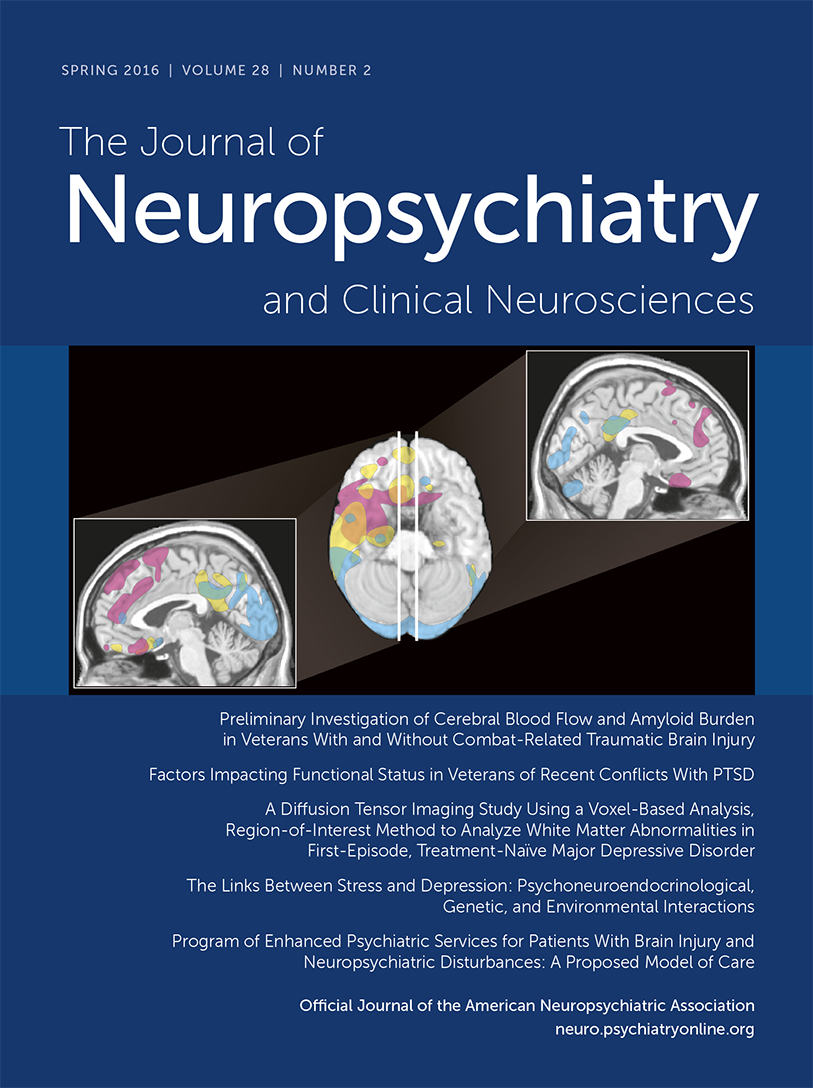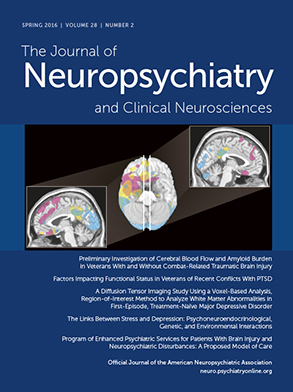Lcyden E, Jastrowitz M: Beiträge zur Lehre von der Loealisation im Gehirn und “ber derenpraktische Verwerthung. Leipzig and Berlin, Verlag von Georg Thieme, 1888
Panjas, 38 years old, a domestic servant, was admitted to Dalldorf because of epilepsy and then transferred to Schöneberg in September 1881 as incurably mentally ill. According to a certificate of the doctors at Dalldorf, he suffered from epilepsy in addition to incurable mental illness. Nothing is stated about the nature of the epileptic attacks; it says only that after the attacks he is very agitated, confused, and aggressive on the ward. He is said simultaneously to have visual and auditory hallucinations for days and has the delusion that other patients persecute, abuse, and ridicule him.
Attacks have not been noted for the last 6 years. In general, he has seemed feebleminded, genially cheerful, and given to jokes. For example, he might stand in front of some fellow patient, open his eyes wide, clearly joking around, and give a hearty laugh. He mistook attendants and physicians for earlier acquaintances, who asked him about matters that they themselves already well knew. He behaved in a childish, silly manner, whistled, [or] would suddenly cry out loudly or convulse in laughter. He was quite idle during the first years [in the institution]. He said, it would be pretty stupid if he should work, he would like to see someone actually do the work, he was too good to work, and so forth. Sometimes he would walk around the entire day with his head low, then suddenly remain motionless, laugh, or begin cursing those around. Sometimes he spoke incomprehensibly of women who had blocked him, about whom he was very angry, so that he might strike out against them.
His chart indicates the occasional erotic element; once he said that the entire ward consisted of young women. Auditory hallucinations have also been observed. Since 1886, he has occupied himself continually with maintenance, hauling coal and sawing wood, usually demonstrating a pleasant demeanor. Nonetheless, there have been moments of sudden agitation, striking out at fellow patients, grabbing someone and saying, this is the one who cursed him out and tortures him so that he can no longer stand the pain. In doing so, he might become quite pallid; then after a maximum quarter of an hour, he would become calm again and manifest his usual stupid, smiling physiognomy, appearing to remember nothing of the episode of agitation. In the spring of 1887, he clearly manifested rapid weight loss and weakness; there were differences in the percussion note in the thorax, an intermittent hectic fever, numerous bacillae in the sputum, [and] protein in the urine; he drilled his head into the pillow, ground his teeth heavily, and died on 15 July.
I should like to emphasize that at autopsy, the frontal bone was 1 cm thick, and that the entire skull was quite heavy and contained little diploe. [There follows a detailed analysis of the skull, which was omitted from this presentation.]
The case had never been diagnosed, because the locus of the tubercular growth was, in terms of our interests, at a quite unimportant or latent site in the brain. [There follows further anatomical observations that have been omitted.]
When many years ago I began the study of psychiatry, I believed that a key to the disorders of the human mind should emerge in the course of observing and collecting the mental disorders that accompanied the focal lesions of the brain. I began with this collection and it soon became apparent that, aside from forgetfulness, dementia, and feeble-mindedness, every form of delirium would have to be included, and with hypochondriac, melancholic, paranoid ideas and delusions of grandeur, the suspicion of progressive paralysis [neurosyphilis] would arise. Yet a certain form of mental disorder (dementia with a singular euphoric excitement, the so-called moria), I observed solely in tumors of the frontal lobe. I have collected more than half a dozen such cases, which I have not previously published because of the difficulty of ascertainment and the differentiation of the symptoms and because of their inconstancy. However, a discussion strikes me now as timely, considering the work of Goltz, who noted a certain change of character in his dogs whose frontal lobes had been subject to operation (Pflüger’s Archiv, 34, p. 477). According to Jacques Loeb, these changes are not evident in unilateral extirpation of the frontal lobe; but in bilateral extirpation, Goltz noted powerful angry mood changes; in the extirpation of the posterior lobes, there was a docile, good-natured, soft change of character, even in animals that earlier had been naturally vicious. Dogs of the first category are distinguished by a heightened reflex excitability, in which they are incapable of arbitrarily checking their reflexes. In this connection, there is an accompanying irritable, agitated character, and unconstrained racing about, which makes them appear as violent, aggressive wild things, whereas they previously had been trusting and peaceful (Loeb, Plfügers Archiv, 34, p. 309). In the area of changed mental states, one can count on the least possible correlation between humans and animals and one must be content with distant resonances. But insofar as such are present, the following discussion may be instructive.
Our patient was essentially good-natured, hallucinatory, and otherwise fairly confused and mentally weak, given to all kinds of coarse jokes and tricks. The episodes of anger that he suffered should be seen, in my opinion, as epileptic equivalents, because of their unmotivated nature, the suddenness with which they erupted and subsided, the pallor of countenance, and finally because of the patient’s apparent amnesia for the events. The attacks might also be regarded in this light, if sudden hallucinations had occasioned them. The patient certainly had earlier suffered from epileptic attacks, about which we were unable to secure further information in Dalldorf. He was also seen in Dalldorf as mentally ill with epilepsy, although his mental illness actually did not bear the mark of epilepsy. It was not a customary epileptic mania with moria-style coloration, because similar manias are accompanied with deeper disturbances of consciousness, and moreover appear as transitory sequelae after epileptic attacks, which was not the case here. Neither in this patient, nor in other patients of this type, have I seen heightened reflex excitability. To be sure, pronounced paralyses were lacking in all these patients up to the point of death; nonetheless, movement in some patients was clumsy and awkward. It happened in some, that they hit their fellow patients, mocked them, that they occasionally appeared sullen and irritable, which is common enough in patients with brain lesions; nonetheless, one could not actually characterize them as having a malign character. Rather, they manifested a certain humorousness, a silly style in speech and behavior, that made them appear as comical. This cheerfulness is, however, more pathognomonic than the sullenness, because it does not correspond to the real situation of the patient. Perhaps this involuntary humor lay in the contrast between their normal apathy and forgetfulness and the sudden moments of insight in which they delivered lively and even sarcastic observations, that probably corresponded to their original personality. Once, as I spoke Latin in the presence of my assistant in the vicinity of Patient III, the patient continued in Latin in an extremely amusing manner, as if he wanted to convince me that he understood this language even though he was a merchant.
Another 67-[year-old] patient, who otherwise was demented, had a tumor in the left frontal lobe. I saw him often in the Charité Hospital, and noted how he sat at a table by the window plucking lint and made witty observations about all passers-by, greatly amusing the nearby attendants. Another 44-[year-old] patient had been seen as a “malingerer” because of his agitated and apparently deliberately nonsensical behavior. He gave nonsensical answers, as though he had not properly understood, accompanied with comical grimaces. He mocked his fellow patients, struck them, took their food away. He would then sprawl in his room and once wanted to rip away the toilet in order to lie behind it because he was supposedly tired. He would urinate in bed and reassure us laughing that he had merely sweated. He loved to engage in indecent speech and sing coarse songs. It was difficult to examine him physically because he let his head sag forward or sidewards, pressed his eyes tightly shut, from the optic disks of which, moreover, a partial white atrophy could be discerned, and so forth. Then suddenly he became stuporous and died in a coma. The autopsy discovered a tumor in his left frontal lobe.
Goltz has attempted to verify his own findings through patient pathology. He cites the famous “crowbar case,” and another case of Baraduc’s. In the first case, Ferrier reports that a patient with a piece of metal lodged in his scull presented remarkably similar symptoms. Yet there was no autopsy and it could not be determined which brain regions were affected. Baraduc’s case strikingly resembles mine. There was bilateral atrophy of all frontal sulci, in addition to the narrowing of the diameter of the arteries that supply them. Bizarre behavior, cheerfulness, stubbornness, vanity, disturbances in speech, then finally dementia. Indeed, one case of Wilks could be added here: conspicuous sullenness, dementia: a tumor the size of an egg in the parenchyma of the left frontal lobe.
I have even found one case in Longet’s Physiology of the Nervous System (translated into German by Hein, Leipzig, 1847, p, 552) the concordance of which is surprising: a cancer-like tumor in the right frontal lobe, situated almost exactly as in our Case I, together with another sitting symmetrically in the left frontal lobe. This is a case that Velpeau and Delpech communicated to Longet in the following manner: Charles Paris, 66 [years old], hairdresser, was admitted on 25 Feb 1843 to the Charité [in Paris] because of a longstanding urinary complaint. Very taken with himself, he mocks others, plays boisterous tricks, and is unconstrainedly given over to masturbation. He responds, however, rationally to all questions. During his admission, clinicians noted that his motor activity was completely unhindered and that his speech was in no way disturbed. Then quite suddenly he became extremely weak and died on 7 March, all the while chattering until his death.
As I indicated above, it is far from me to maintain, that in the frontal lobe all lesions, or even only tumors of the so-called moria, would be accompanied by a distinctive psychosis. There are indeed frontal-lobe tumors that are accompanied by melancholic symptoms. (Ewald Grimm, Wiener med Wochenschr, 18, [1868], 41–43). We encounter moria only in a certain number of frontal-lobe diseases and certainly not exclusively in tumors. This singular psychic illness-picture is also seen among some “paralytics” [neurosyphilis patients] at the beginning of their disease; also in senile dementias, and in some alcoholics where certainly atrophy of the frontal lobes occurs as well.
With the exception of motoric aphasias with the lesion on the left side, until now symptoms distinctive to the frontal lobes have not been reported. Pronounced paralyses are not observed in lesions in the pre-Rolando area, and disorders of smell and vision are only observed in indirect or direct involvement of the olfactory and optic nerves. Therefore, I see in the psychosis described here a significant phenomenon pointing to localization in the frontal lobes. We are entitled to view in headaches, convulsions, and vomiting the existence of a brain tumor in general. Similarly, we may localize the lesion to the frontal lobes if the patient displays symptoms of moria. In so far as I have been able to ascertain from the literature (where psychic symptoms are often unreported unless they are dramatic), symptoms of moria have not been reported in lesions, especially tumors, in the other brain regions, only in the frontal lobes.
A special thank you is extended to Kristian Erickson. This project would not have been possible without his help or dusty dictionaries.

